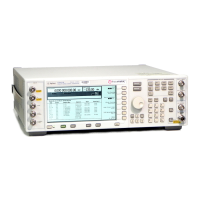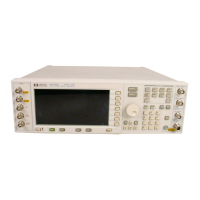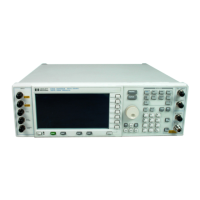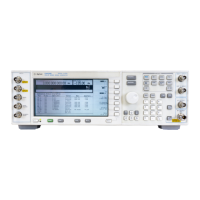21
www.agilent.com/find/esg
The Bluetooth dirty transmitter test signal is used to verify the demodulation capabilities
of the receiver. The ESG and Signal Studio for Bluetooth software’s dirty transmitter test
capability provides a versatile solution for receiver development and Bluetooth module
verification. The ESG provides unrivaled impairment flexibility for receiver development.
Impairment Sets
The Special Interest Group (SIG) has defined a set of 10 signal impairments as a suite
of tests called “Bluetooth Dirty Transmitter” tests. The default Impairment Sets, see
Figure 26, is the prescribed suite that is specified in the Bluetooth SIG’s RF Tests for
Single and Multi-slot Sensitivity, RCV/CA/01/C and RCV/CA/02/C (see Table 1,
Section 1.1 of the specification).
.
You can select each impairment set individually, and all parameters in the different
fields can be modified. In addition, any number of impairment sets may be selected.
For example, if only one is selected, a waveform with the selected impairment set will
be repeatedly transmitted. Otherwise, after the required 20 ms, each of the following
selected impairment sets will be transmitted.
Carrier frequency offset
This impairment adds a static error to the transmission frequency. It is used to simulate
a Bluetooth device transmitting at a frequency slightly offset from the specified carrier.
Modulation index
The modulation index is the ratio of peak-to-peak frequency deviation to the bit rate.
Modifying this parameter impairs the peak-to-peak frequency deviation only.
Creating Signals
Figure 26. Impairment sets

